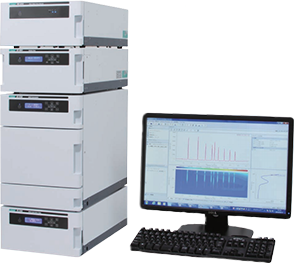Analytical laboratories are engaged in studies on characteristic properties of substances of both known and unknown composition. Examples of such substances are new research molecules, monitoring quality of manufacturing processes, university research activities and practical sessions, etc. Such analysis involves confirmatory testing using both physical and chemical analysis.
Physical parameters important for establishing primary identity of compounds are melting point, boiling point, specific gravity, refractive index, specific optical rotation, etc. Once primary identity is established confirmatory chemical analysis helps authenticateit andquantify components of interest in mixtures of compounds using both classical analysis techniques as well as advanced analysis techniques such as chromatography, x-ray diffraction, elemental composition by AAS, ICP, etc.

Chromatography in its different manifestations has played a key role in development of separation sciences with contributions notably from paper chromatography, high performance liquid chromatography and gas chromatography. The current article will focus on the role played by HPLC. The applications are diverse and cover virtually many key areas of human activity.
Role of HPLC
Modern analytical laboratories are equipped with a diverse range of analytical instruments such as HPLC, GC,HPTLC,GC-MS, LC-MS, UV- visible spectrophotometers, FT-IR spectrometers, ICP-OES, ICP-MS,AAS, particle size analyzers, DSC, TGA, etc. However, it is also often observed that most laboratories have a single unit of each of the mentioned systems but there could be scores of HPLC systems which operate like workhorses round-the-clock.
The present article is an attempt to explore as to what makes HPLC such a popular analytical technique.
Versatility
HPLC is a highly versatile technique that offers unlimited choices that help meet different laboratory applications. It is difficult to discuss all these in an article of this length but the major options are covered
Sample size
It is possible to inject sample sizes ranging from micro-litre quantities to liters using micro bore to preparative scale columns
Operation mode
The four common modes of operation are normal phase, reverse phase, ion-exchange and gel permeation chromatography. These afford analysis of compounds of wide range of polarities, ionic strengths and polymeric materials.
Stationary phases
The commonly used stationary phases are silica-based but recent developments in phase technology particularly in the areas of Zirconia supports, core shell technology and monolithic phases have helped conduct analysis of samples at extremes of pH and temperatures.
Column sizes
It is possible to select columns of different lengths and diameters to handle higher sample loading andoptimize speed of analysis and resolution between peaks. This is possible without sacrificing accuracy of results.
Detectors
The most commonly used detector is the UV- visible range detector but the scope of analysis becomes even more versatile with availability of detectors such as photodiode array detector, refractive index detector, fluorescence detector, conductivity detector, mass selective detector and light scattering detectors. Such a large choice makes it possible to detect and quantify molecules of different sizes and having different characteristic properties
The unlimited options available have opened new applications in monitoring quality and future developments in pharmaceuticals, foods, synthetic polymer materials, life sciences and bio- analytical studies, pesticide residue analysis and environmental monitoring.
A sound understanding of the HPLC technique will prove to be a value added asset for any analytical scientist irrespective of his or her area of specialization.
